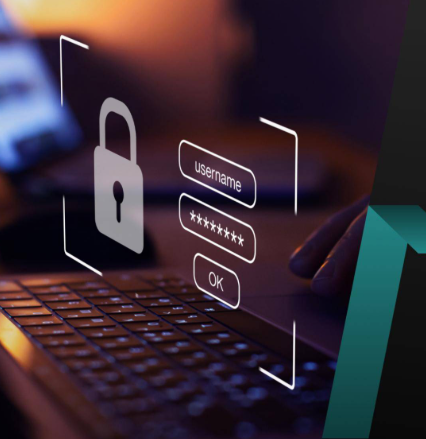Essential Cyber Risk Mitigation Strategies for Sustainable Business Security
- 77 Views
- admin
- 07/19/2024
- Cybersecurity
In today’s digital-first world, cybersecurity threats have become more frequent, more advanced, and more damaging. Businesses—regardless of size or industry—are facing everything from ransomware and phishing to insider threats and third-party breaches. The only way to stay ahead of these evolving risks is to take a proactive approach, embedding risk mitigation into the core of an organization’s operations and decision-making.
Understanding Cyber Risk Treatment Options
Before implementing specific defenses, organizations must understand the available options for managing risks. Each threat should be evaluated and addressed based on its severity, likelihood, and business impact.
Risk Avoidance
This approach eliminates the source of risk by removing exposure. For example, avoiding certain technologies or vendors if their use introduces unacceptable vulnerabilities. It’s best used when the associated risk could cause severe damage and the activity isn’t mission-critical.
Risk Reduction
The most commonly used strategy, risk reduction, involves minimizing the likelihood or impact of an event. Tactics include deploying technical controls, improving processes, and enhancing staff training. This strategy is ideal when risks can’t be eliminated but can be managed within acceptable levels.
Risk Transfer
By outsourcing certain services or purchasing cyber insurance, organizations can shift the financial burden of a risk to a third party. This doesn’t eliminate the risk but limits potential losses in case of an incident.
Risk Acceptance
Sometimes, the cost of mitigating a risk outweighs the potential impact. In these cases, businesses may choose to accept the risk but monitor it closely. This is appropriate for low-impact risks that don’t significantly affect operations.
Choosing the Right Approach
Not all risks should be treated the same way. Organizations often use a combination of avoidance, reduction, transfer, and acceptance to cover their entire risk landscape. Decision-making should be supported by frameworks like FAIR, which help quantify cyber risks in financial terms—making it easier to determine which risks demand immediate attention and investment.
Effective Mitigation Strategies by Threat Type
Ransomware
Ransomware can cripple operations by encrypting data and demanding payment for recovery. The best defense involves a mix of preparation and containment.
- Routine Backups: Store backups offline and test restoration procedures regularly.
- Timely Patching: Keep systems updated to reduce exploitable vulnerabilities.
- Network Segmentation: Separate critical infrastructure from user endpoints.
- Incident Response Plan: Define clear steps for detection, containment, and recovery.
- Threat Monitoring: Use analytics and intelligence feeds to spot and respond to threats early.
Phishing and Social Engineering
These threats often exploit human behavior, making employee awareness and process controls essential.
- Security Training: Educate staff on identifying suspicious communications.
- Simulations: Run phishing exercises to test and improve staff responses.
- Advanced Email Security: Filter incoming messages and scan attachments and links.
- Multi-Factor Authentication (MFA): Require additional identity verification for access.
- Email Authentication Protocols: Use DMARC, SPF, and DKIM to prevent spoofing.
Supply Chain Attacks
Vulnerabilities in third-party vendors can have ripple effects across your organization.
- Vendor Risk Assessments: Evaluate and monitor vendors before and during engagements.
- Contractual Safeguards: Include cybersecurity requirements and audit rights in agreements.
- Supply Chain Mapping: Maintain an updated inventory of all service providers.
- SBOM and Code Integrity Checks: Validate all third-party software before deployment.
- Diversification: Avoid dependence on a single supplier to reduce potential disruption.
Insider Threats
Whether intentional or accidental, insider risks are often harder to detect and prevent.
- Access Controls: Enforce least privilege and role-based access to minimize unnecessary exposure.
- Activity Monitoring: Use behavioral analytics to flag unusual access patterns.
- Thorough Offboarding: Immediately revoke access when employees leave or change roles.
- Awareness Campaigns: Encourage reporting of suspicious behavior through a trusted internal process.
- Legal Safeguards: Use NDAs and enforceable policies to protect sensitive information.
Building a Resilient Cybersecurity Posture
Organizations should look beyond technical controls and focus on long-term resilience. This means:
- Regular Risk Assessments: Evaluate and prioritize risks using frameworks like NIST 800-30 or FAIR.
- Real-Time Threat Intelligence: Implement tools that offer continuous monitoring and adapt to emerging threats.
- Incident Response Readiness: Develop plans, conduct drills, and perform post-event reviews to strengthen capabilities.
- Cross-Industry Collaboration: Join threat-sharing communities to gain early insights on evolving attack patterns.
- Board-Level Involvement: Ensure leadership understands cyber risks and allocates resources accordingly.
- Adopting New Technologies: Explore AI, machine learning, and automation to bolster threat detection and response.
Final Thoughts
Cybersecurity is no longer a set-it-and-forget-it function—it’s a dynamic, strategic discipline that requires foresight and flexibility. By understanding the different ways to manage risk and applying tailored mitigation strategies, businesses can not only reduce their exposure to attacks but also build a stronger, more resilient foundation for growth.
Investing in proactive, risk-informed cybersecurity today means fewer surprises tomorrow—and greater confidence in your ability to adapt to whatever threats come next.
Recent Posts
- How AI is Revolutionizing Architectural Design: A Look at Tools, Trends, and the Future
- Streamlining Cyber Risk Assessments Through Automation
- Understanding the Difference Between Blockchain and Distributed Ledger Technology
- Is Bitcoin Mining Still a Viable Venture in 2025?
- Exploring AI: Unveiling Possibilities, Challenges, and Future Implications


